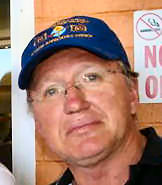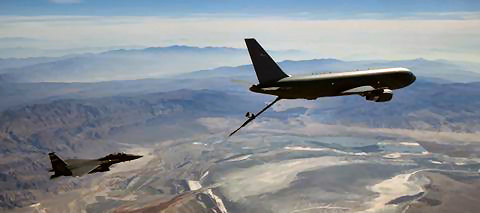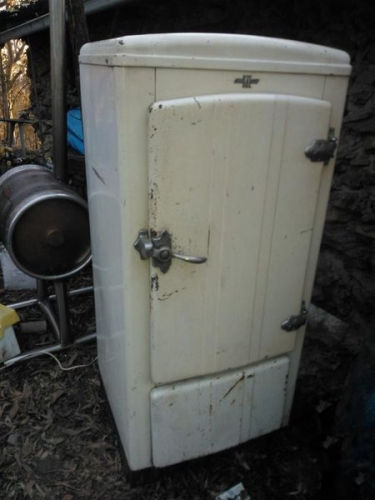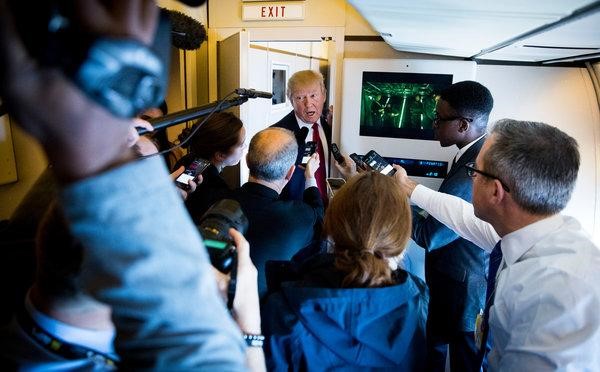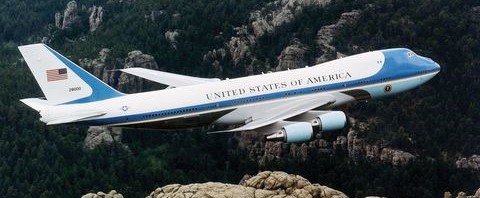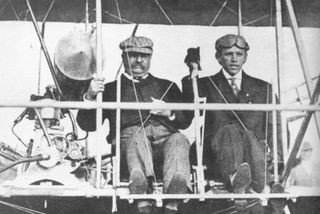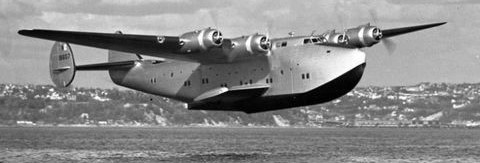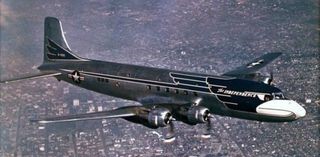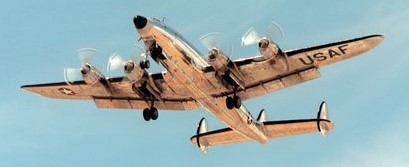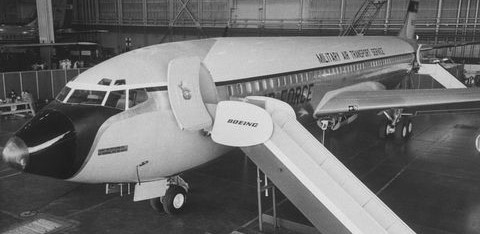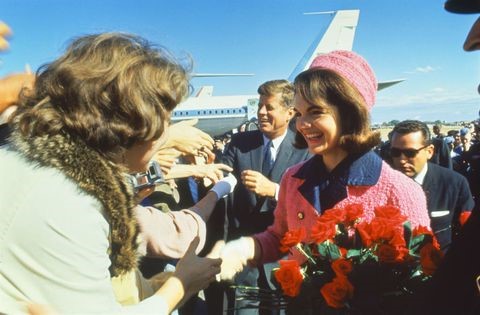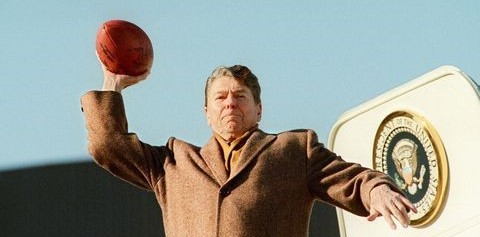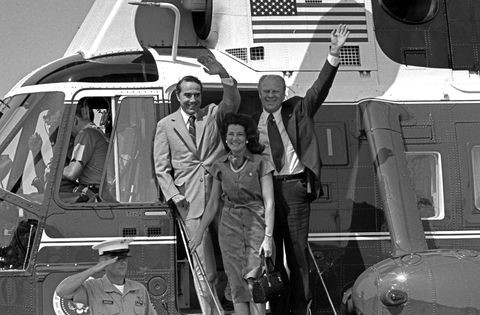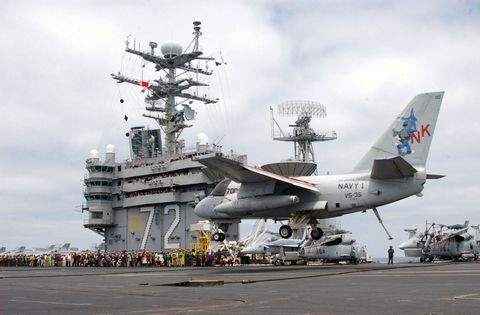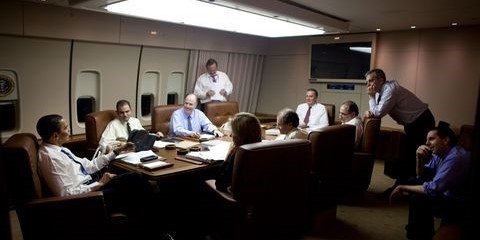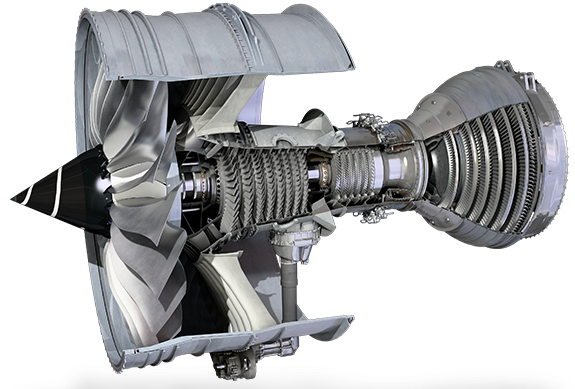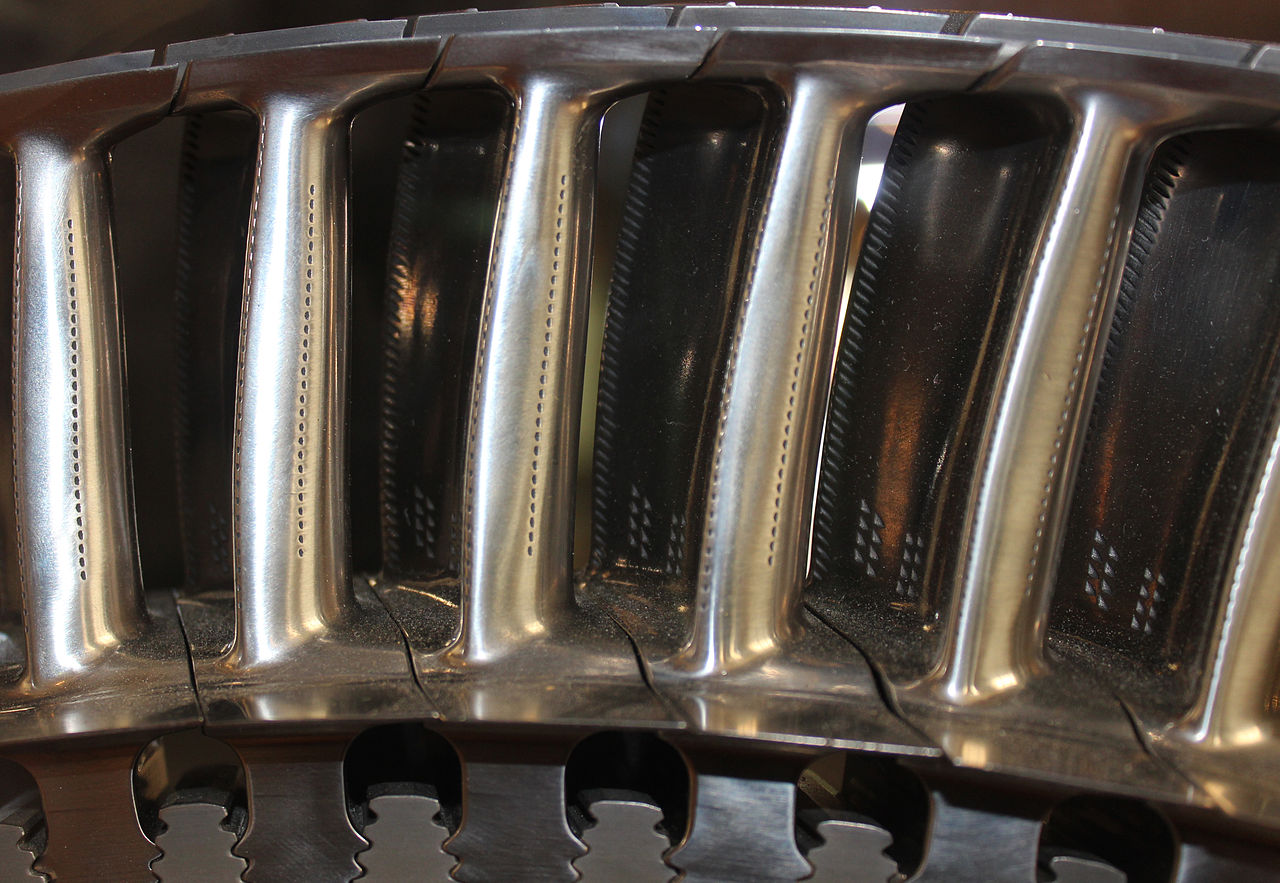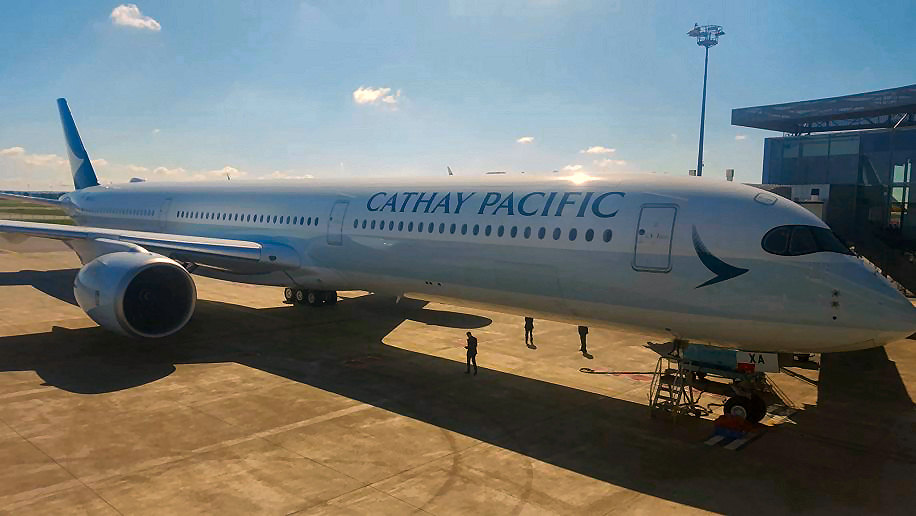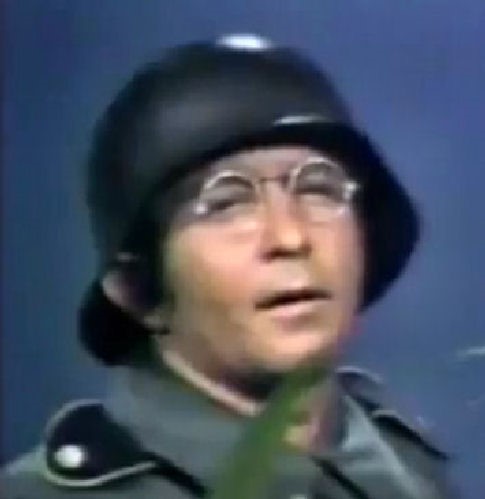|
|
||||||||
|
||||||||
|
Privacy Policy | Editorial Policy | Profit Policy | Join the Association | List of Members | Contact us | Index | Links |
||||||||
|
Back Go to page: 1 2 3 4 5 6 7 8 9 10 11 12 13 14 15 16 17 18 19 20 Forward
|
||||||||
|
Allan George’s Gems.
|
||||||||
|
|
||||||||
|
Contents:
Who can travel with the President on Air Force 1
|
||||||||
|
The KC-135 Tanker, which entered service in 1956, could become the first U.S. warplane to serve for 100 years.
|
||||||||
|
|
||||||||
|
It's the B-52 that's most often the butt of jokes about its age, with onlookers noting that airmen could be working on the same planes their grandfathers flew, but another long-serving aircraft could hit the century mark. It's now looking like the KC-135 tanker fleet could mark 100 years in the air before its replacement is finally ready.
Tankers are an essential component of American airpower. They supply U.S. and allied warplanes and support aircraft with the fuel to cross oceans and fly longer over battlefields. The KC-135 Stratotanker first joined the US Air Force in 1956. Built up from the Boeing 367-80 prototype aircraft, (it is not a modified B707 as a lot of people think) the KC-135 was equipped with internal tanks capable of holding 130,000 litres of aviation fuel and a mid-air refuelling boom. The result was an aircraft that has refuelled U.S. and allied fighters, bombers, and support aircraft in every conflict and theatre since the Vietnam War. Hundreds of KC-135s were built between 1956 and 1965 and according to Pentagon figures, the U.S. Air Force currently flies 153 KC-135s, while the Air National Guard operates 172 such planes and the Air Force reserve flies another 72.
That’s a total of 397 aircraft still flying.
The Air Force is currently preparing to purchase many new KC-46 Pegasus tankers, which is a new plane derived from the Boeing 767, however, the USAF won't be buying enough of the Pegasus to replace all KC-135s.
There's another tanker project, tentatively named “KC-Z,” allegedly set to enter service in the 2030-2035 timeframe. KC-Z could use a new, low-observable airframe, making it more difficult for enemies to detect with radar. There is also the possibility the future tanker will be optionally manned or unmanned. However, given the difficulties involved in building the KC-46, including long delays and cost overruns, a brand new tanker could be postponed into the 2040s.
|
||||||||
|
|
||||||||
|
|
||||||||
|
Having a cold drink on hot day with a few friends is nice, but having a hot friend on a cold night after a few drinks - PRICELESS.
|
||||||||
|
Air Force One, the aircraft used to fly the President of the US of A here there and everywhere is to get a new fridge. Not just any old fridge, but a US$24M Fridge.
While the US Air Force may be prepping the next jets that will serve as Air Force One, it will be years before they're ready to take to the skies. In the meantime, the two aging Boeing 747 aircraft that currently do the job need some upkeep to get them to the finish line. The latest tune-up? New refrigerators that will cost a total of $24 million. The two aircraft that currently serve as the primary presidential transports are highly modified 747-200Bs that have been in service since 1990. The Air Force needs to replace these planes with more modern technology and more efficient aircraft.
A contract for $23,657,671, awarded to Boeing, will cover two identical fridges, one for each of the jets that serve as Air Force One when the president is on board. And while that may sound like a pretty penny, it's a drop in the bucket compared to the initial $4 billion estimate for two new jets, over which President Trump has expressed his dismay.
The price tag is giant for a reason. Air Force One needs something much more sophisticated than a mini-fridge for ginger ales. The custom-made refrigerators, which are fitted below the passenger cabin, have a 70 cubic foot capacity and are designed to hold as many as 3,000 meals. After all, Air Force One is designed to be a flying White House that can stay in the air indefinitely by means of aerial refuelling, but that's not a whole lot of good if you run out of food in an afternoon.
The new, monster fridges are expected to be finished by October 30th, 2019.
|
||||||||
|
When the President travels, who’s allowed to join him?
When the president goes on a trip, he takes a varied entourage. A group of his senior aides accompanies him, usually including national security, domestic or economic advisers, speechwriters and others, depending on the length of the trip and its purpose. But 13 members of the news media, known as the protective press pool, also take seats on Air Force One, representing the worlds of wire services, print newspapers, news sites, broadcast television and radio, as well as photographers.
In the Washington news media’s often contentious battle for scoops, the press pool represents a kind of sportsmanship by necessity. Only a few seats can be spared on the plane, so the print and television poolers must represent the entirety of their disciplines and send out a series of short, to-the-point reports throughout the trip to those not on it. The White House Correspondents’ Association manages a rotation of news organizations that travel at their own cost, and it is explicitly understood that the poolers must share all the material they gather, without keeping anything they’ve seen or heard for an exclusive story.
“Pool duty is kind of the ultimate mixed blessing,” said Mark Landler, who has been a White House correspondent for The Times since 2011. It offers close access to the president, but it can be stressful: Poolers are expected to quickly send their reports to 10,000 people or more, usually via iPhone, and the accuracy of quotations and descriptions in those reports is paramount.
“And you’re often doing it in very difficult circumstances,” Mr. Landler said. “Getting in and out of motorcades, sometimes climbing in and out of helicopters, rushing to finish the pool report before you get on Air Force One.”
|
||||||||
|
My wife just stopped and said "You weren't even listening were you?" I thought......"that's a pretty weird way to start a conversation!" |
||||||||
|
|
||||||||
|
A Visual History of Air Force One Presidential air travel over the past 100 years.
Air Force One isn't a specific plane, it's the Call Sign given to any Air Force aircraft with the President of the United States on board. The designation was first used when an Eastern Airlines commercial flight entered the same airspace as a plane carrying President Eisenhower and both planes had the same call sign. Air Force One has been the designation for the president ever since, but the history of presidents on planes goes back a lot further than that.
First Flight
Theodore Roosevelt was the first president to fly in an aircraft although he had already left office by the time he took to the skies in the Wright Flier, the very first heavier-than-air powered aircraft.
Archibald Hoxsey, who worked for the Wright brothers, had the honour of piloting the former president.
Theodore Roosevelt and pilot Arch Hoxsey before their flight, St. Louis, October 11, 1910.
Early in the 1930s it was recognised that the President would need an aircraft if he was to successfully manage a country the size of the US of A and after some consideration the Douglas Dolphin was the first aircraft specifically designated as a transport for the president. One of these amphibious planes was modified for President Franklin D. Roosevelt and designated RD-2 by the U.S. Navy.
It remained at the ready from 1933 to 1939, though there is no evidence FDR actually flew in this plane.
Even so, Franklin Delano Roosevelt was the first sitting president to fly. In 1943, a Boeing 314 Clipper flying boat named the Dixie Clipper carried him 5,500 miles in three legs to attend the Casablanca Conference where he met with Winston Churchill and Charles de Gaulle to discuss the next phase of World War II.
During WW2, air travel was the preferred method of transatlantic transportation due to the ongoing threat of German submarines during the Battle of the Atlantic.
A Boeing 314 Clipper circa 1945.
It was at the Casablanca Conference that the Allies declared they would accept nothing less than the unconditional surrender of the Axis powers.
Toward the end of the War, the Secret Service outfitted a C-54 Skymaster for transporting the ailing FDR. Nicknamed the Sacred Cow, the C-54 had a radio telephone, a sleeping area, and even a retractable lift to hoist Roosevelt and his wheelchair into the plane. President Roosevelt flew on the modified aircraft only once before his death. The Sacred Cow transported him to the Yalta Conference in February 1945.
Harry S. Truman, who succeeded FDR, flew aboard the Sacred Cow after Roosevelt's death in April 1945, he was on the plane when he signed the National Security Act of 1947, which established the office of Secretary of Defence and created the U.S. Air Force as a distinct branch of the military (it was formerly the U.S. Army Air Forces).
Later that year, Truman replaced the Sacred Cow with a VC-118 Liftmaster (DC-6) which he named Independence after his hometown in Missouri. This was the first presidential transport aircraft with a unique exterior, the nose of the aircraft was painted with a bald eagle's head.
President Harry S. Truman's Douglas VC-118 in flight, circa 1947.
Air Force One
In 1953, Eastern Airlines commercial flight 8610 flew into the same airspace as a plane carrying President Dwight D. Eisenhower which had the call sign Air Force 8610. To avoid future confusion, the Air Force established the unique Call Sign "Air Force One" for any aircraft carrying the President of the United States.
When elected as President, Dwight D Eisenhower introduced four propeller-driven aircraft to serve as presidential transports: two Lockheed C-121 Constellations which were nicknamed Columbine II and III, and two Aero Commander aircraft, the smallest planes to ever serve as Air Force One.
The first official flight of Air Force One carried President Eisenhower in 1959.
Towards the end of the Eisenhower Administration, the Air Force decided that prop driven aircraft were just not going to cut it for the president anymore.
Columbine II, a Lockheed C-121 Constellation.
Air Force One would henceforth be a jet aircraft. SAM (Special Air Missions) 970, a Boeing 707, replaced President Eisenhower's C-121 Constellations in 1959. SAM 971 and 972 were added to the fleet shortly after.
A Boeing 707-120 with modified interior and communications equipment, called VC-137, took Eisenhower on his 22,000-mile "Flight to Peace" goodwill tour when he visited 11 Asian nations over the course of 19 days in December 1959.
The First Presidential Jet
The jet made the trip in half the time that the Columbine aircraft would have.
John F. Kennedy travelled in SAM 970, 971 and 972 on multiple occasions, but in October 1962, the U.S. Air Force purchased a long-range 707, the Boeing C-137 Stratoliner, to become the new presidential transport aircraft: SAM 26000. President Kennedy famously had the red and gold livery of the plane changed because he thought it looked too regal. The plane used a more modest polished aluminium design with blue and white instead, and aircraft designated for presidential use have mimicked the look ever since.
President John F. Kennedy and First Lady Jackie Kennedy greeting a crowd at Dallas Love Field, with Air Force One in the background, just hours before JFK's assassination, November 22, 1963.
The most famous moment aboard SAM 26000 was Lyndon B. Johnson taking the oath of office after the assassination of President Kennedy, an event captured in this iconic photo.
President Johnson used the plane for a trip to South Vietnam during the war and President Nixon flew on SAM 26000 during his historic trip to China in 1972, the first time a U.S. president ever visited the People's Republic. SAM 26000 stayed in service until the Clinton administration, though the plane was replaced as the primary presidential aircraft by another VC-137, SAM 27000, in 1972 during the Nixon administration.
In 1974, when Air Force One was flying President Nixon into Syria, two Syrian MiG fighter jets flew up to act as escorts. However, no one informed the pilot of Air Force One, and he immediately took evasive manoeuvres including a dive that sent staffers on the aircraft sprawling. The U.S. Air Force alerted the pilot of Air Force One that the MiGs were escorts and not hostile interceptors shortly after the encounter.
Nixon boarded SAM 27000 shortly after resigning the presidency. The pilot of the aircraft at the time, Colonel Ralph Albertazzie, was forced to contact air traffic control to report that the call sign for the plane had changed from Air Force One to SAM 27000, as Gerald Ford was sworn in as president with Nixon still in flight. According to the New York Times, Albertazzie radioed in while flying over Jefferson County, Missouri: "Kansas City, this was Air Force One. Will you change our call sign to SAM 27000?" Air traffic control responded: "Roger, SAM 27000. Good luck to the president."
SAM 27000 flew every subsequent President of the United States except for Barack Obama. On August 29, 2001, it flew George W. Bush from San Antonio to Waco, Texas, for its final flight.
President Ronald Reagan throws a football toward the press on January 11, 1988 as he boards Air Force One in Cleveland, Ohio, to return to Washington DC.
Executive One, Marine One, Army One and Navy One
The aircraft carrying the United States President isn't always referred to as Air Force One, specifically when it is not an aircraft operated by the Air Force. President Nixon is the only president to have flown on Executive One, the designation for a regularly scheduled civilian flight that has a sitting president on board.
Nixon and his family flew on a United Airlines DC-10 from Washington Dulles International Airport to Los Angeles International Airport in December 1973 to "set an example for the rest of the nation during the current energy crisis," according to the administration.
President Gerald Ford, Senator Robert Dole and Elizabeth Dole disembarking Marine One to attend a campaign rally in Kansas in 1976.
Other branches of the armed forces get to transport the president from time to time as well. Helicopters operated by the U.S. Marine Corps receive the designation Marine One when they carry the President of the US (POTUS). The Army assisted with helicopter transport for the president prior to 1976, using the rarely seen designation Army One. A Bell UH-13J Sioux was the first helicopter used to transport a sitting president when it flew President Eisenhower to his summer home in Pennsylvania in 1957.
A U.S. Navy Lockheed S-3B Viking carrying President George W. Bush in the co-pilot seat lands aboard the aircraft carrier USS Abraham Lincoln on May 1, 2003.
The Navy first had the honour of flying the president and of using the call sign Navy One, in May 2003. An S-3B Viking operated by the "Blue Wolves" of the VS-35 carrier squadron flew President George W. Bush to the aircraft carrier USS Abraham Lincoln off the coast of California, making him the first president to land on an aircraft carrier in a plane, requiring an arrested landing.
In a unique operation carried out in March 2000, President Clinton flew to Pakistan aboard an unmarked Gulfstream III that was not designated Air Force One. A C-17 Globemaster III used the call sign Air Force One, without the president on board, as it flew the same route a few minutes behind the Gulfstream III to act as a decoy.
Boeing 747
The Air Force decided the president needed new planes to replace the aging 707s during the Reagan Administration, though the pair of 747s that replaced SAM 26000 and 27000 were not ready for service until George H. W. Bush took office. Production of the first Boeing 747-200B to serve as Air Force One was delayed so additional work could be done to protect the aircraft from the effects of an electromagnetic pulse (EMP), either from a nuclear blast or as a direct attack on the plane's electronics.
The VC-25s, two 747s modified by the military for presidential transport,
contain secure telephone and computer communications systems so the
president can continue to conduct operations while in flight. The aircraft
also have an office for the president, a conference room, and private
quarters for the president and the first lady.
President Barack Obama talks with his staff in the conference room of Air Force One during a flight from Prague, Czech Republic, en route to Ankara, Turkey, on April 5, 2009.
Immediately after the attacks of 9/11, George W. Bush boarded SAM 28000 and took off from Sarasota-Bradenton Inter’l Airport in Florida. An airliner near to Air Force One shortly after take-off ominously failed to respond to air traffic control's attempts to radio the plane (it turns out the plane's transponder was mistakenly switched off). Colonel Mark Tillman, the senior pilot of Air Force One at the time, took no chances and flew his aircraft over the Gulf of Mexico, requesting "fighters on the wing." The airliner did not follow Air Force One.
Air Force One of the Future. The Air Force announced in January 2015 that the Boeing 747-8 will serve as the next presidential aircraft. The new aircraft will have defences against electromagnetic pulses, in-air refuelling capabilities, and likely a sophisticated onboard missile defence system. It could be some time before the aircraft are ready to fly the president however, and the VC-25s, though aging, will likely see plenty more use.
|
||||||||
|
Did you know? Line dancing was started by women waiting to use the toilet. |
||||||||
|
|
||||||||
|
When Rolls-Royce was privatised in April 1987, its share of the large civil turbofan market was only 8%. Despite increasing sales success with its RB211, General Electric and Pratt & Whitney still dominated the market. At that time, the aircraft manufacturers were proposing new planes that would require unprecedented levels of thrust. Furthermore, the Boeing 777 and Airbus A330 were to be twin-engined and their airline customers were demanding that they be capable of operating in the Extended-range Twin-engine Operations (ETOPS) environment at the time of their initial introduction into service.
Rolls-Royce decided that to succeed in the large engine market of the future, it would have to offer engines for every large civil airliner. In view of the enormous development costs required to bring a new engine to market, the only way to do this would be to have a family of engines based on a common core. The three-shaft design of the RB211 was an ideal basis for the new family as it provided flexibility, allowing the high-pressure (HP), intermediate-pressure (IP) and low-pressure (LP) systems to be individually scaled. Rolls decided to launch a new family of engines, which was formally announced at the 1988 Farnborough Airshow.
Reviving a name last used 30 years earlier, the new engine was named the Trent. The name had been used for two previous Rolls-Royce engines: the first Trent was Rolls-Royce’s first working turboprop engine; the second Trent was the 1960s RB203 bypass turbofan, designed to replace the Spey. Rated at 9,980 lbf (44.4 kN) it was the first three-spool engine, forerunner of the RB211 series, but never entered service.
Rolls-Royce has obtained significant sums of "launch investment" from the British government for the Trent programmes, including £200 million approved in 1997 for Trent 8104, 500 and 600 and £250 million for Trent 600 and 900 in 2001. No aid was sought for Trent 1000. Launch investment is repaid to the government by a royalty on each engine sold.
The basis for the Trent was the RB.211-524L, work on which began in 1987.
Like its RB211 predecessor, the Trent uses a three-spool design rather than the more common two-spool configuration. Although more complex, the engine is shorter and more rigid and suffers less performance degradation in service than an equivalent twin-spool. The advantage three spools gives is that the front-most fan, driven by the third, rearmost turbine, can be tuned to rotate at its optimal (fairly low) speed; the two compressors are driven by the two other turbines via their spools. The three spools are concentric.
All the engines in the Trent family share a similar layout, but their three-spool configuration allows each engine module to be individually scaled to meet a wide range of performance and thrust requirements. For example, the large 116-inch (290 cm) diameter fan of the Trent 900 keeps the mean jet velocity at take-off at a relatively low level to help meet the stringent noise levels required by the Airbus A380's customers. Similarly, core size changes enable the high pressure (HP) turbine rotor inlet temperature to be kept as low as possible, thereby minimising maintenance costs. The overall pressure ratio of the Trent 800 is higher than the 700's despite sharing the same HP system and intermediate pressure (IP) turbine; this was achieved by increasing the capacity of the IP compressor and the Low Pressure turbine.
Trent engines use hollow titanium fan blades with an internal Warren-girder structure to achieve strength, stiffness and robustness at low weight. For the Trent 800, the 110-inch diameter fan can rotate at 3300 rpm with a tip speed of about 1,740 kph, well above the speed of sound. The single-crystal nickel alloy turbine blades are also hollow and air is pushed through laser-drilled holes in them to cool them because the gas temperature is higher than the melting point of the blades.
The completely redesigned core turbomachinery delivers better performance, noise and pollution levels than the RB211.
When the RB211 programme started, it was intended that none of the compression system would require variable stators, unlike the American competition. Unfortunately, it was found that, because of the shallow working line on the Intermediate Pressure Compressor (IPC), at least one row of variable stators was required on the IPC, to improve its surge margin at throttled conditions. This feature has been retained throughout the RB211 and Trent series. Although the original intent was not met, Rolls-Royce eliminated the need for many rows of variable stators, with all their inherent complexity, thereby saving weight, cost and improving reliability.
On 17 January 2008, a British Airways Boeing 777-236ER, operating as BA038 from Beijing to London, crash-landed at Heathrow after both Trent 800 engines lost power during the aircraft's final approach. The subsequent investigation found that ice released from the fuel system had accumulated on the fuel-oil heat exchanger, leading to a restriction of fuel flow to the engines. This resulted in Airworthiness Directives mandating the replacement of the heat exchanger. This order was extended to the 500 and 700 series engines after a similar loss of power was observed on one engine of an Airbus A330 in one incident, and both engines in another. The modification involves replacing a face plate with many small protruding tubes with one that is flat.
With its new family of Trent engines, Rolls Royce has gone from being an “also ran’ to become one of the major players in the jet engine producers in the world. Recently, the Trent XWB, the most efficient large aero engine in the world, celebrated another milestone as the Trent XWB-97 passes one year in service. Exclusively powering the Airbus A350-1000, the Trent XWB-97 is the latest and most powerful variant of the Trent XWB and is the highest-thrust engine Rolls-Royce has ever certified.
It also has the highest operating temperatures and the most advanced cooling systems Rolls-Royce has ever designed in a civil engine. Qatar Airways was the first customer to take delivery of the Trent XWB-97. Since it entered service, the airline has enjoyed one year of successful operations, flying from Doha to destinations around the world. In June 2018, Cathay Pacific took delivery of its first Airbus A350-1000, powered by the Trent XWB-97.
|
||||||||
|
|
||||||||
|
Just one year after it entered service, there are currently 170 Trent XWB-97 engines on order across 11 customers, testament to the increasing popularity and proven reliability of the engine. While there is very little visible or operational difference between the Trent XWB-97 and its sister engine, the original 84,000lb-thrust Trent XWB-84, it employs a range of advanced technologies to produce extra thrust and optimum aircraft performance.
Rolls-Royce has continued to ramp up production to meet customer demand for models of the A350 and now assembles Trent XWB engines in both Derby, UK and Dahlewitz, Germany. Rolls-Royce currently delivers one Trent XWB every day of the week.
Click HERE to see how Rolls Royce assembles the Trent XWB engine.
The US Air Force’s F-117 Stealth aircraft was a major contributor to the success of the first Gulf War. See the video below. |
||||||||
|
|
||||||||
|
|
||||||||
|
During the 3½ years that the US was involved in WW2, which started with the Japanese bombing of Pearl Harbour in December of 1941 and ended with the surrender of Germany and Japan in 1945, the people of the U.S.A. produced the following: |
||||||||
|
|
||||||||
|
||||||||
|
|
||||||||
|
|
||||||||
|
|
||||||||
|
There are lots of stories about entries in the old EE500, the maintenance log that the RAAF used to keep an eye on its aircraft. Some are probably true, but I suspect a lot more a figments of active imaginations, after all, who but a person on their last day in the Air Force would put their name to some of these. But they are fun to read.
Here are a sample:
There was supposedly a t-shirt worn by 10 SQN tarmac crew which said "Maritime is Number 10". Not to be outdone, Townsville Base Sqn people had one which read Base Squadron is Number 1.
And there's these:
I am sure there will be many more. If you know any, please let us know, and we'll publish them here. You can contact us HERE.
|
||||||||
|
April Fool.
Over the years there have been many many April Fool's pranks played on the unsuspecting, this is probably one of the better ones. It was done by the BBC back in 1957. |
||||||||
|
|
||||||||
|
|
||||||||
|
|
||||||||
|
|
||||||||
|
|
||||||||
|
Velly Intelesting – but stupid!!!!
|
||||||||
|
|
||||||||
|
|
||||||||
|
Back Go to page: 1 2 3 4 5 6 7 8 9 10 11 12 13 14 15 16 17 18 19 20 Forward |
||||||||
|
|

